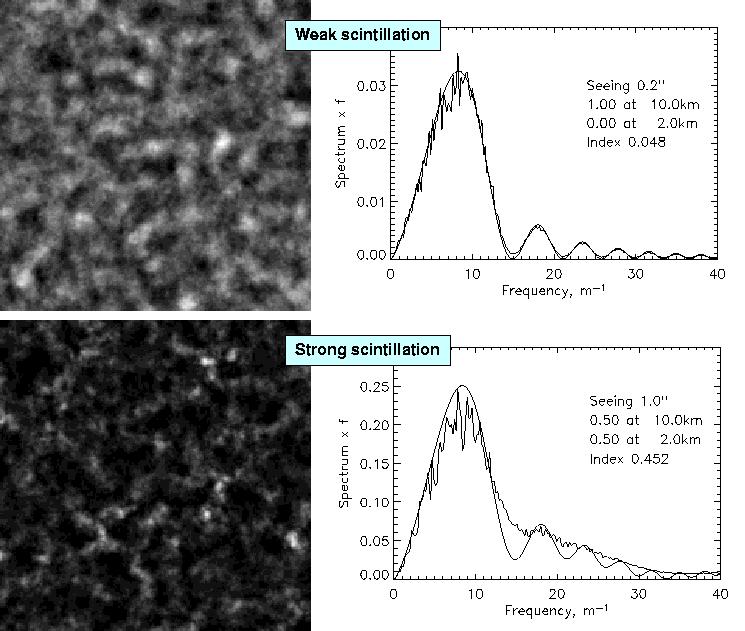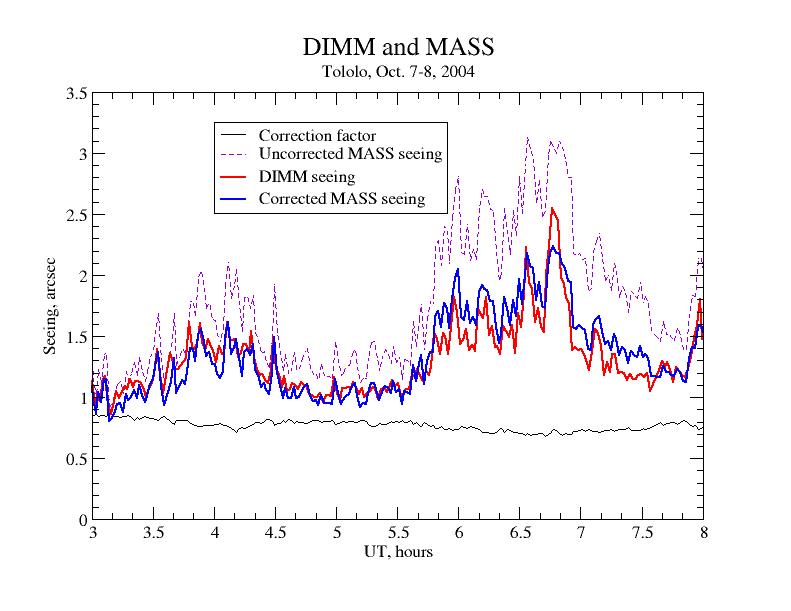

For some time, it has been noted that MASS measures a worse seeing
than DIMM whenever the turbulence is strong. The reason for these
"overshoots" is a failure of theory used to interpret the MASS
data. The theory is valid for weak scintillation (index much less than
1). Under strong scintillation (encountered frequently even at good
sites), the power spectrum of intensity fluctuations deviates from its
theoretical shape (in the Figure, the smooth lines with ripples show
theoretical spectra, the "noisy" lines result from computer
simulations of turbulent screens and propagation).

We found by numerical simulation that, to the first order, the
"overshoots" of MASS can be described by a single coefficient
dependent on the scintillation index in the small aperture (A). The
"MASS seeing" must be divided by (1+0.7A)^0.6, where A is the
A-aperture scintillation index. The efficiency of this correction is
illustrated in the Figure. The correction vanishes for weak
scintillation.